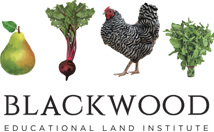Most simply, aquaponics… “is the marriage of aquaculture (raising fish) and hydroponics (the soil-less growing of plants) that grows fish and plants together in one integrated system.
The fish waste provides an organic food source for the growing plants and the plants provide a natural filter for the water the fish live in. The third participants are the microbes (nitrifying bacteria) and composting red worms that thrive in the growing media. They do the job of converting the ammonia from the fish waste first into nitrites, then into nitrates and the solids into vermicompost that that are food for the plants.” (The Aquaponic Source)
This method of farming combines “aquaculture” and “hydroponics.” In a hydroponic system, there are no fish. In an aquaponic system, there are. Basically, you’re growing two things at once in an aquaponic system. (Plants eat fish nutrients and fish eat plant’s.) (Quora)
How is this system sustainable? “Aquaponic systems use 10 percent of the water used by traditional agriculture. Water is never lost or dumped; instead, water from the aquaculture system is fed to a hydroponics system where the by-products of the fish are broken down by bacteria into nitrates which the plants use as nutrients.” Also, aquaponics has no need for soil, which means that in areas that may have chemically-laden or nutrient-less soil, there is still an opportunity to grow healthy and affordable food. Technically speaking, the food is also organic, as there are no pesticide inputs in the system because it would effect the growth and health of all the inputs involved. (Honey Colony)
If you’re interested in this type of agriculture, be forewarned – there are many inputs involved, such as time, money and expertise. Learn more before you leap by checking out USDA’s “National Agriculture Library” or visiting some Houston-based aquaponics folks at HydroShack or Sustainable Harvesters.
